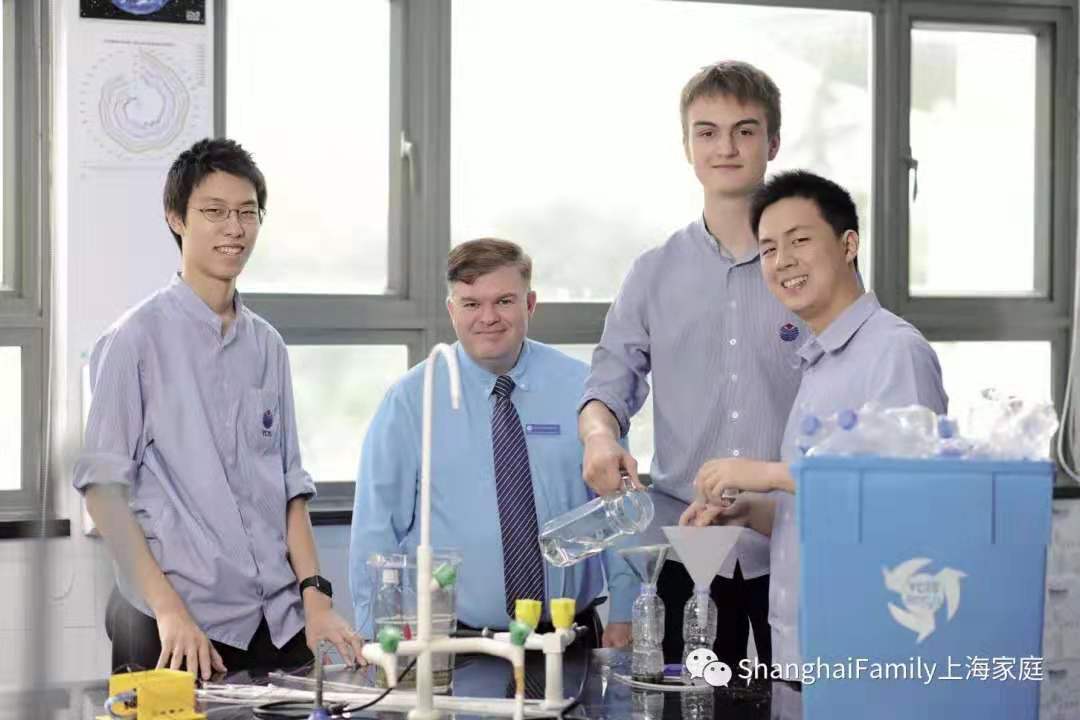
There is no doubt that we are facing some ecological and sustainability issues that need addressing, pronto. Every day, we hear about the problem with plastics and the dangers our oceans are facing, or the fact that our planet is steadily getting warmer, but sometimes we feel removed from these issues. Sometimes we feel like the efforts we make are not enough or that we don’t have the power to change our situation.

However, in our interviews with Shanghai international schools, it is clear that there is a whole generation of students who do feel empowered to make the necessary changes - however big or small – to help our planet survive. Behind these students are the parents who encourage them and the schools who instill in them a willingness to learn about the planet as well as a desire to take action. These students from Concordia International School Shanghai, Shanghai Community International School, Yew Chung International School, and Shanghai American School do not balk when presented with the challenges of sustainability. Quite the opposite. Like true modern-day heroes, they have risen to the challenge and are attempting, in their own ways, to save the planet.
With students like these on the job, our future is looking greener every day.
YCIS Shanghai students innovate to preserve water

Miguel, Andy, and Michal, Year 13 YCIS Shanghai, Puxi Students
Water shortage is one of the biggest problems in the world today. For all of the gadgets and gizmos there are to address this problem, in the end, many people forget to use these devices or do not even bother to do so in the first place. But we believe that we have found a way to save water without people needing to go out of their way to remember – by repurposing discarded plastic bottles to save the water that is used every day in their bathrooms, namely, in their toilets.
Typically, a toilet’s flushing system consists of several important parts: a water storage tank called the cistern, a means of feeding water into the cistern, a trigger for the system, and a floatation device. When the flushing trigger is pressed, the cistern is drained completely before refilling itself. A floatation device then tells the water provision system to stop feeding water into the toilet when it reaches the appropriate level.
Our idea is to displace a certain amount of water in the cistern using discarded plastic bottles filled with sand or water. If you want to be extra eco-friendly, you can even use rain water! When the water is displaced in the cistern, it causes the floatation device to think that the cistern is properly filled, but in reality, less water is used. This means that water is saved every time you flush the toilet! Discarded plastic bottles are the perfect displacement device. The bottles can work indefinitely, while other devices such as rocks or bricks can disintegrate over time.
So, what did we do exactly? We collected plastic bottles from the recycling bins around our school. Then, we filled the bottles with sand and water (or even rain water!) before placing them into the school toilets. We calculated that if we placed bottles filled with one liter of water in each of our school’s toilets, we would save around 128,800 liters of water per school year.
This idea can be implemented by anyone around the world who has a toilet. The only things you need are plastic bottles, a weight (such as sand or marbles) and water. Bottles can be tied together with zip ties to reach the maximum displacement volume. After testing our idea, we promoted this “plastic bottle displacement” to our schoolmates, and even received the rare opportunity to spread our message and magnify our effect on the environment through a TEDx talk last semester.
Due to the inefficient use of water, places like the Philippines and rural parts of China are heavily affected by water shortage problems. Implementing our idea would help to mitigate some of the effects of water shortages. At the same time, our idea would help ameliorate the issues caused by excess PET bottles that litter our oceans – even forming islands three times the size of France – by putting them to good use.
These issues will not simply solve themselves. Though our individual contributions may seem minuscule, together our efforts can work toward making a greater impact in solving these daunting problems. Only when everyone contributes do we make a difference. As the former United States Senator, Barbara Mikulski, said, “Each one of us can make a difference. Together we make change.” It’s time for us to make that change.
While we are lucky to be living in Shanghai where green initiatives such as trash separation are being introduced, it is also important to remember that by making your own contributions, you can make the world a better place for not only yourself, but also for others. If you wish to help implement this idea in your own school or home, please check out more on our project here: https://www.ted.com/tedx/events/32711